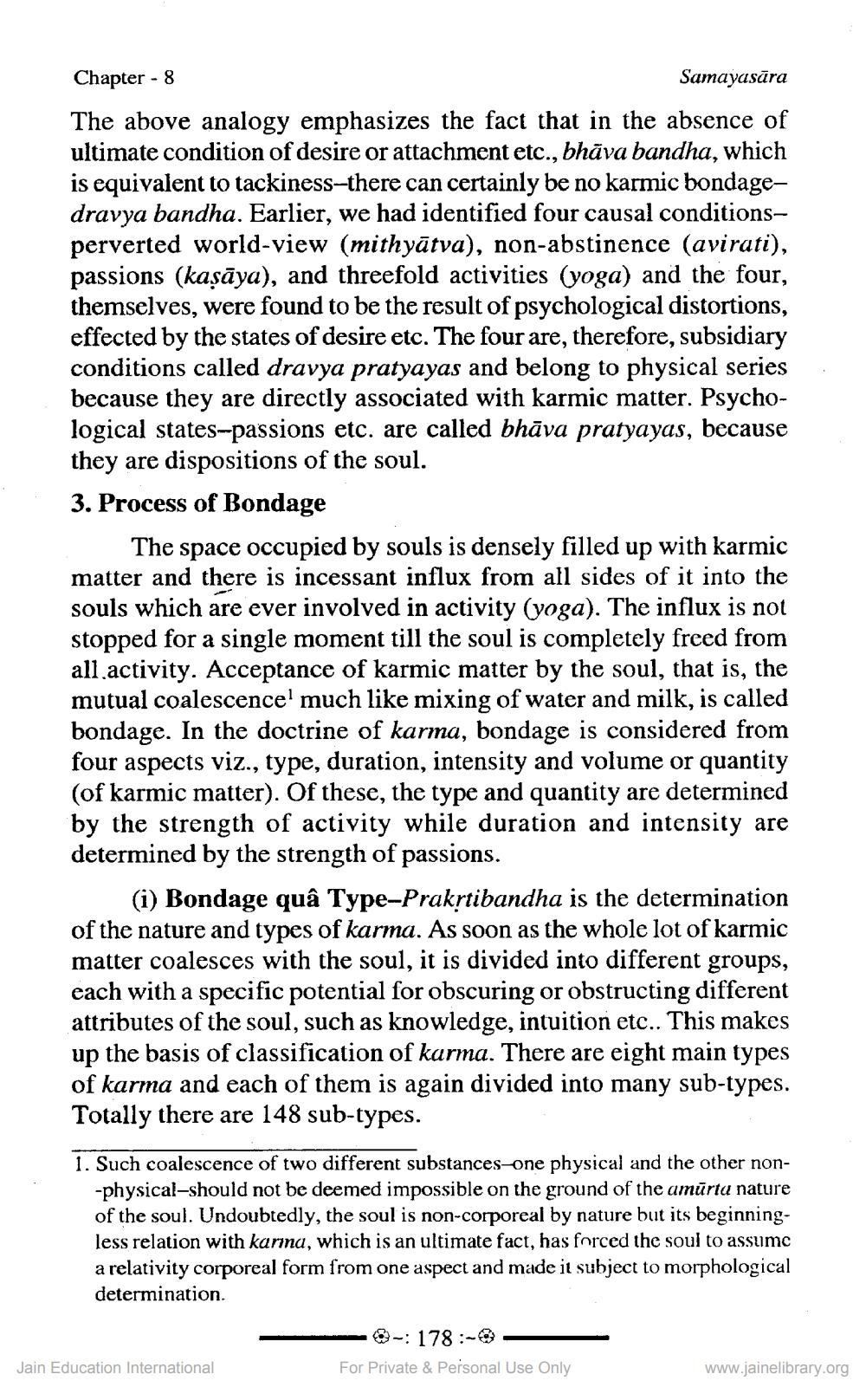________________
Chapter - 8
Samayasāra
The above analogy emphasizes the fact that in the absence of ultimate condition of desire or attachment etc., bhāva bandha, which is equivalent to tackiness-there can certainly be no karmic bondagedravya bandha. Earlier, we had identified four causal conditionsperverted world-view (mithyātva), non-abstinence (avirati), passions (kaşāya), and threefold activities (yoga) and the four, themselves, were found to be the result of psychological distortions, effected by the states of desire etc. The four are, therefore, subsidiary conditions called dravya pratyayas and belong to physical series because they are directly associated with karmic matter. Psychological states-passions etc. are called bhāva pratyayas, because they are dispositions of the soul. 3. Process of Bondage
The space occupied by souls is densely filled up with karmic matter and there is incessant influx from all sides of it into the souls which are ever involved in activity (yoga). The influx is not stopped for a single moment till the soul is completely freed from all activity. Acceptance of karmic matter by the soul, that is, the mutual coalescence' much like mixing of water and milk, is called bondage. In the doctrine of karma, bondage is considered from four aspects viz., type, duration, intensity and volume or quantity (of karmic matter). Of these, the type and quantity are determined by the strength of activity while duration and intensity are determined by the strength of passions.
(i) Bondage quâ Type-Prakrtibandha is the determination of the nature and types of karma. As soon as the whole lot of karmic matter coalesces with the soul, it is divided into different groups, each with a specific potential for obscuring or obstructing different attributes of the soul, such as knowledge, intuition etc.. This makes up the basis of classification of karma. There are eight main types of karma and each of them is again divided into many sub-types. Totally there are 148 sub-types.
1. Such coalescence of two different substances-one physical and the other non
-physical-should not be deemed impossible on the ground of the amūrtu nature of the soul. Undoubtedly, the soul is non-corporeal by nature but its beginningless relation with karma, which is an ultimate fact, has forced the soul to assume a relativity corporeal form from one aspect and made it subject to morphological determination.
-: 178:- - For Private & Personal Use Only
Jain Education International
www.jainelibrary.org




